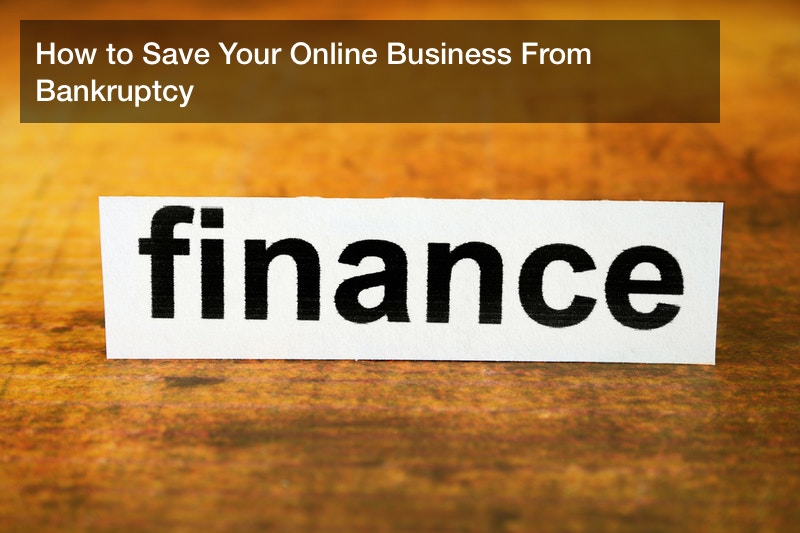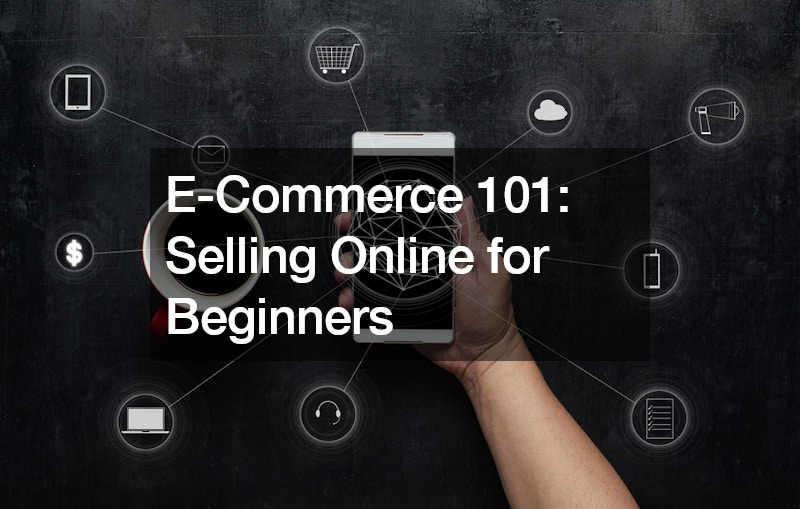
If you run an online business, chances are you take a lot of pride in it. Many people with online businesses spent months and even years coming up with new ideas before they ever saw a profit. If this is the kind of origin story you’ve experienced, your online business is surely near and dear to your heart. You may not want to go through the process of forming a new business again, and you certainly don’t want to suffer the loss of your online business.
However, it’s important to keep in mind that bankruptcy is not always the monster business owners make it out to be. It can certainly be disruptive, but it can also be an important step in your online business’s growth. Still, in most cases, it should be considered a last resort, and here we’ll give you some ideas that might help you save your online business from bankruptcy.
Identify and Resolve the Main Problem
Businesses don’t go bankrupt for no reason. If you’re being forced to consider bankruptcy, it’s probably because your business isn’t earning enough money to justify your debts relative to your assets. You may not be turning a profit at all, or you may have accumulated so much debt that you can’t even keep up with interest payments.
Whatever the problem appears to be on the outside, it’s always somehow a result of not earning enough money. Before you consider what options your business has for financial recovery, you need to evaluate your entire business and pinpoint exactly what’s wrong that’s contributed to your financial strain.
Sometimes a lack of sales can be traced back to a flaw in your website design, such as a poorly-made landing page or a broken signup form. This kind of problem is easy to resolve and might even sound a little silly, but it just goes to show how little problems can create big losses.
Often, business bankruptcies happen as a result of over-optimism on the part of the business owner or executive. You might have started your online business thinking there was a bigger market for your offer than there really was. Or you might have ignored established financial advice because you believed so strongly that your product would be popular. While it might be too late to reverse early mistakes like these, you can still learn from them and apply the lessons to whatever you do next.
Along with over-optimism, another common cause of business failure is a lack of organization. This usually surfaces as a lack of bookkeeping or record-keeping. This is especially common among sole proprietors who run online businesses or work from home. Many people find bookkeeping to be a tedious and frustrating chore, and they allow their boredom to keep them from acting as responsible business owners. The problem is, when you aren’t paying careful attention to what the money is doing and where it’s going in your business, things tend to go wrong without you realizing it.
Finally, business bankruptcy can be caused by over-extension, which is when a business tries to do or be too much at once. Often this arises in the form of too much debt, as a business overestimates what it needs and what it can afford to pay back. While business lending itself can be the solution for many financial problems, this is one example of how it can get out of hand.
Once you identify the root cause of your business’s financial problems, it will be much easier for you to make a wise decision as to what to do about it. Sometimes uncovering the problem shows you exactly what to do to get your business back on track, no bankruptcy needed. Other times the problem turns out to be somewhat unresolvable, such as a fatal flaw you made at the very beginning. But even these types of problems can usually be offset by smart strategizing and prompt action in the present. Evaluating what’s wrong is the first and most important step.
Streamline Your Business and Focus on Your Strengths
Identifying the flaws in your online business is a big accomplishment, but it’s only the first step to escaping bankruptcy. Next, you need to solve the problems that caused your financial trouble in the first place, as quickly as possible to avoid further loss. As we touched on earlier, sometimes the solutions are as obvious as the problems themselves, while at other times finding solutions is a bit more challenging. Either way, effective solutions usually come in the form of streamlining your business processes, and taking time and resources away from less important things to focus on your strengths.
Often once a business gets going, it will find itself expanding rapidly to focus on things far outside of its original mission. For example, local sign companies might start to see success with yard or business signs, and then expand to sell bumper stickers, fliers, and even T-shirts, thinking their initial success guarantees that they’ll succeed in these other areas. But oftentimes, a business that strays away from its core offer simply becomes too complicated and ends up causing harm to their original customers and profit sources.
As a more relevant example, you might run an online drop-shipping business that started out selling a single product with Facebook ads and a simple landing page. Maybe when you saw success with the product you were selling, you decided to expand and sell a lot more products. Of course, this not only resulted in a larger, more complicated online store — it also resulted in more opportunities for things to go wrong, as you would now have to service customers with a wider range of product purchases. While expansion can certainly be a good thing, if you expand too much too quickly, it can backfire almost instantly.
Regardless of what kind of business you run, if you’re experiencing problems where you used to be profitable, it could be because you lost sight of your original objective. Whether that was a specific product you specialized in or a certain set of customers you focused on exclusively if you’ve since expanded your focus to include other things, you should ask yourself if that was where your money problems started. Sometimes getting rid of your peripheral offers and audience to focus on your core service is the best thing to do for your business, even if it means disappointing people initially.
After reaffirming your primary objective and getting rid of distracting offers and services, you should ask yourself what other ways you might use to simplify your business. The more unnecessary processes and tools you’ve incorporated into your business, the more complications you have to deal with. These complications usually result in wasted time and even money, as you find yourself jumping through hoops and doing things just because someone told you it was important to do them. Whatever ways you can find to simplify and streamline your business should be applied, as long as you can implement them without compromising your core objective. For example, it might reduce complexity and save money for you to outsource certain tasks to a virtual office, instead of hiring a large staff in-house.
Engineer a Viral Marketing Campaign
When you’re being forced to consider bankruptcy, it’s usually because you aren’t turning enough of a profit, even if you have the resources to serve customers. If you have a product but no customers, you probably have one of two problems: either the customers aren’t finding out about you, or when they find you they aren’t being persuaded to buy. The average person performs a Google search between three and four times each day, and that probably includes your ideal customers. If you want to begin making sales, you simply need to make sure you appear in their lives when they need what you offer.
This is where our last strategy for avoiding bankruptcy comes in: come up with an idea for a new marketing campaign to bring in more business. You probably do marketing all the time already. After all, many online businesses will use an advertising agency and marketing services to reach new customers and stay in touch with old ones. But this strategy is about more than just doing routine marketing — it’s about doing something new, unexpected, and effective for boosting interest in your service and driving new customers to your checkout page.
Often a marketing campaign like this will involve something called viral marketing, where you attempt to engineer a video, blog article, or social media post to attract lots of attention and go viral. While you can’t always make something go viral on purpose, you can at least use traits common to viral posts to inform your marketing decisions. If you’ve ever been in a brand marketing consulting session, chances are you learned about tried-and-proven techniques for grabbing people’s attention through branding. Viral marketing is similar, as it involves using eye-catching, interest-boosting elements to encourage virality in a piece of media.
Without exception, media goes viral because it invokes strong emotions in the people experiencing it. Videos often go viral because they make people laugh, and people want to share things they find funny with others. Blog posts will often go viral because they promote an inspiring message or a valuable idea. And sometimes a business’s social media posts will go viral just from using a meme format that’s currently trending.
The one drawback viral marketing has is that it’s not something you can do predictably, especially not if you aren’t a seasoned marketer already. You may find yourself making a few dozen clever social media posts before one of them gets significant traction. But you don’t have to actually go viral to gain the benefits of thinking like a viral marketer. The idea is simply to share information and offers that grab people’s attention, and which are specifically relevant to your target audience.
Your goal should be to become significant to your ideal customer base, whether that’s by providing the best resources in your niche through your blog, or simply providing the best customer support in your industry. Then you need to serve and reinforce this idea through every interaction you have with your audience, from your web design to your sales messages to your social media. By taking this approach to marketing and business in general, you just might find that you get a surge of new customers right when you need them to save your online business.
Know When it’s Time to Give In
Even though this article has been about avoiding bankruptcy, it’s important to recognize that having to file for bankruptcy isn’t necessarily the worst thing that can happen to you. In fact, it might be just what your online business needs to survive and even thrive.
First of all, you should know that there are actually three different types of bankruptcy, known as Chapter 7, 11, and 13 bankruptcy respectively. Contrary to popular belief, they don’t all require you to shut down your business. Depending on your situation, you may even be allowed to settle your debts and return to business almost as if nothing ever happened, although you should certainly make it a point to learn from the mistakes that brought you there.
The kind of bankruptcy that most people probably think of first is Chapter 7 bankruptcy. Filing a Chapter 7 bankruptcy will force you to close your business because it doesn’t allow protection for any assets that the company needs to operate. Everything will be sold and the money will be used to pay back your creditors.
For this reason, businesses very rarely file for Chapter 7 bankruptcy. You can probably shut down and dismantle your business more effectively on your own, and then deal with your creditors on your own terms, rather than working with bankruptcy attorneys. However, if you simply run a freelance business, Chapter 7 bankruptcy might not hurt you much, because the court can’t prevent you from continuing to offer your personal services after your initial business closure. Even if your business assets are sold off, no one can sell your ability to provide a service.
Unlike Chapter 7, only individuals can file a Chapter 13 bankruptcy case. This means you only have this option if you’re a sole proprietor, which is probably the case with your online business. As long as you don’t have to keep any expensive equipment on hand to run your business, a Chapter 13 bankruptcy might be a good idea, because it allows you to pay lower, more manageable payments to your creditors over time.
Finally, if you own a partnership or corporation and want to stay in business, you’ll need to file a Chapter 11 bankruptcy. Like a Chapter 13 bankruptcy, this allows your online business to reorganize its debts and stay in business.
Whether you find a way to increase revenue fast, or you have to rely on business litigation in the end, the important thing is to stay optimistic. Through determination and creative problem-solving, any entrepreneur can become a success, even if not every business they launch stays successful. Strive to maintain a big-picture perspective, and you and your online business will do just fine.







